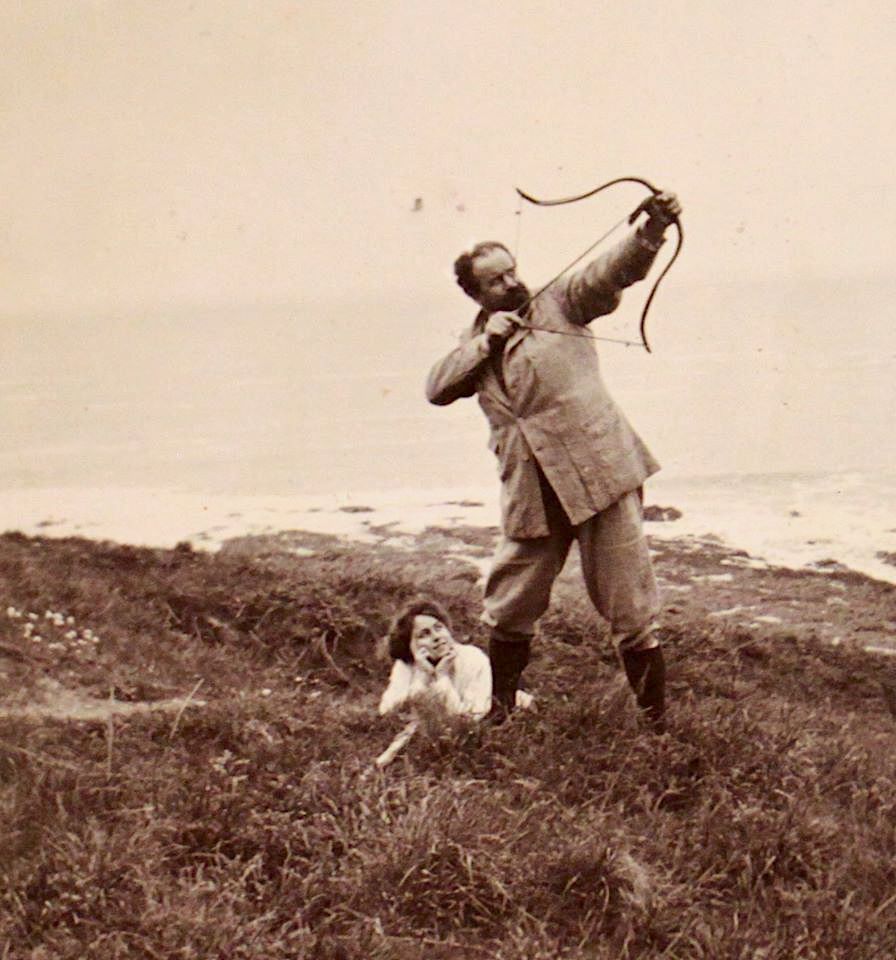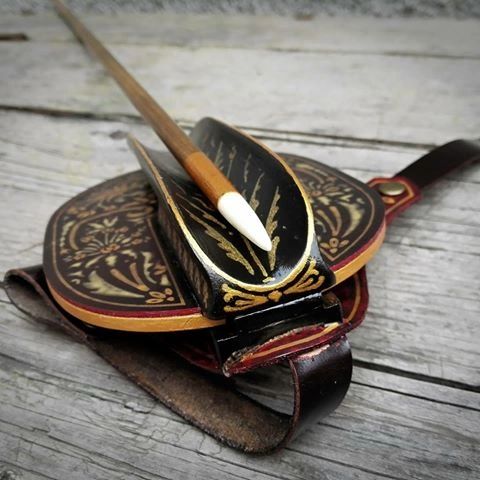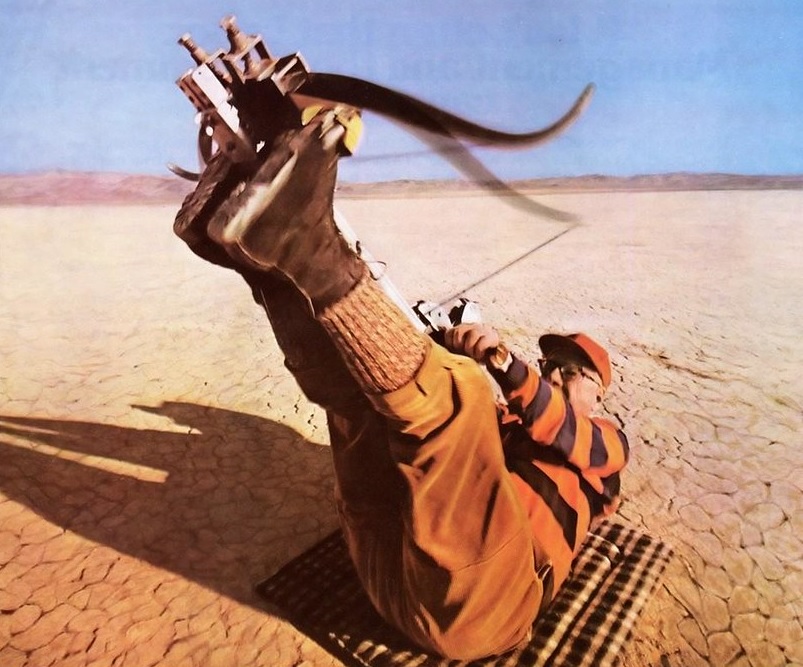Flight Archery
Flight Archery – Going the Distance
Flight archery refers to archery conducted for the sole purpose of seeing how far an arrow can be shot. It is a highly competitive form of archery, and it appears to have been very competitive for quite some time. Some cultures in particular, such as the Korean and Turkish, placed a high value on being able to shoot far.
Some devotees to historical and traditional archery may recall the story of the Secretary to the Turkish Ambassador. On July 1794, a Mahmud Effendi impressed onlookers in London England by shooting 482 yards. Mahmud reportedly remarked that Turkish flight archery standards were much higher and apologized for the poor performance. Not long after this, in 1798, Sultan Selim III managed to cast an arrow 972 yards. These are impressive feats. This article explores flight archery, with an emphasis on traditional Turkish flight archery.

Why Flight Archery?
Before we delve into the specifics of flight archery, let us explore its background. Why would distance shooting become such a competitive and obsessed-over form of archery? There are a few important considerations to make here.
Just like in many other competitive endeavors, reach is important! Take for example the sport of boxing. If one of the competitor’s arms are considerably longer, they would be able to hit their opponent and not be within reach of a counter punch. This same concept surely was noticed and understood by early archers, particularly in a combat zone. If your archers could hit the enemy and not be within range of their archers, you were at a tactical advantage.

This led to an arms race of sorts, with bowyers creating more powerful bows, and archers requiring more strength to pull them. Traditional composite reflex bow design and technology reached their zenith with the Ottoman Empire. Being able to shoot great distances evolved into a competitive national sport, with the most competent archers acquiring much fame and recognition. The obsessive desire to cast an arrow the longest distance evolved over time from the military use of the bow and arrow.
Competitive flight archery has gained much popularity in recent times and is recognized as an official event by the World Archery Federation, the international federation for the sport of archery.
Specialized Flight Archery Equipment
In order to facilitate the cast of arrows to ever-increasing distances, flight archery enthusiasts have specially engineered equipment. This section gives an overview of some of the specialized equipment developed, with an emphasis on traditional Turkish archery gear.
Arrows
First and foremost, the arrows used in distance shooting can be quite different from the arrows most archers are familiar with. Flight arrows are typically much smaller than other types of arrows. Being made purposefully small, the weight of the arrows can be significantly reduced. As a result, these arrows fly much farther than larger, heavier arrows shot from the same bow.
Typically, flight arrows have a barrelled design. The term “barrelled” as it refers to an arrow, implies that the middle of the arrow is wider than the ends. There is a subtle yet discernable bulge in the center of the arrow, which gently tapers down towards the ends. As a result of this design, the arrows are more aerodynamic as well as lighter.

Next, let’s discuss the fletching. The feathers are tiny in comparison to other arrow fletchings. For traditional Turkish flight arrows, parchment or feathers may be used. It can be quite rigid, yet is made exceptionally thin. Typically they are 2 1/2 inches long and 1/4 inch back towards the nock.
Flight archery enthusiasts and competitors have been known to construct fletchings out of almost anything including razor blades, floppy disks, and as of late, 3D printed fletchings.
Typically, flight arrows of the traditional Turkish variety are made from pine. Modern flight archers may use carbon, aluminum, or other modern materials.
Anatomy of a Turkish Flight Arrow
The following is based on an examination of 37 Turkish arrows dated to the 1700s. The collection of arrows resides within the Stone Collection at the Metropolitan Museum of Art, New York. These arrows are the subject of study in Paul E Klopsteg’s Book “Turkish Archery and the Composite Bow”.
The arrows are all slightly barrelled, that is they taper towards the ends and have a slight bulge in the center, somewhat like a wooden barrel. Being constructed from conifer wood, they are all very straight and made to a high level of consistency. The tips of these flight arrows were typically bone, while the nocks are made from brazilwood or goat’s horn. Good arrow would be dense, and straight grained. The trees from which this wood could be obtained should be older than 10 years and cut down during its period of dormancy (winter).

Nocks
Klopsteg remarks in his work: “The nock pieces were either separately glued to the shaft and well wrapped with sinew, or the nock was made of a single piece of hardwood or horn that had been glued to the shaft beforehand. Brazil wood was generally used, but this was varied with horn from the wild goat. The sides of the nocks were slightly bulbous, but never exceeded in diameter that of the shaft at its largest section.
The sides or “cheeks” of the nocks diminished in thickness towards the opening at the “lips”. The clearance between the lips was smaller than the width of the bottom of the nock in which the string rested. The “corners” of the lips at the inner sides of the nock were well rounded, to facilitate knocking th arrow. The nock pieces were slightly yielding so that the nock in effect became a spring clip that snugly fitted the string and held the arrow securely in its place. In general shape, the nock reminds one of a tulip blossom.” [Turkish Archery and the Composite Bow by Paul E. Klopsteg, pages 80,81]
The halves of the nocks are bound with extremely fine sinew, being soaked in hot glue and wound around the nock halves. Once the sinew dries, it is cut where the nock accepts the string. This sinew winding adds considerable strength to the nock.
Length
All arrows in this particular collection are all 24 inches in length, plus or minus about half an inch. Mr. Mahmoud Effendi, Secretary to the Turkish Ambassador in London, whom we mentioned earlier, shot arrows measuring 25 inches according to those who witnessed his shooting in 1794.

Fletching
According to Klopsteg who took many details from an earlier work, published in Constantinople in 1847 by a certain Mustafa Kani, several types of bird feathers were used for fletching. Commonly feathers were taken from the swan, eagle, the white and spotted pigeon and the cormorant. Pinion and tail feathers were used, however, for flight archery, only the inner vain of pinion feathers were used. The feathers would have been all from the same wing, either all from the left-wing or right. After the nocks are attached, the vanes or feathers are placed 120 degrees apart on the shaft, just in front of the nock. One feather is in line with the nock.
Siper
A super is an arrow guide. It consists of a small, saddle-shaped channel that is secured to the archer’s bow hand. Allowing for an archer to draw an arrow within the arc of their bow, sipers come in handy when engaging in flight archery. The archer comes to full draw with a much shorter arrow. Because flight arrows are so short and small compared to an ordinary target or war arrow. This is primarily because of weight saving and well as aerodynamic considerations.

A long draw ensures a greater amount of energy storage in the bow, and a short arrow ensures a stiffer spine and less weight.
Being made from a variety of materials, namely woods, horn, ivory, and metal, a siper could help an archer propel its small flight bow greater distances. Leather was the material used for the strap which secured the siper to the archer’s wrist.
Flight Archery Competitions
Flight archery competitions are nothing new. Several archery fields or Okmeydanı (literally arrow-field) were established all throughout the Ottoman Empire. These fields were designed and built specifically to host a variety of archery contests, especially flight archery competitions. Once such arrow field was built in Istanbul (formerly Constantinople). After some decline in terms of a military instrument, due mainly to firearms, interest in archery as a competitive sport remained strong under the conqueror of Constantinople, Muhammed II. After rebuilding the archery guildhall on the Okmeydan in Istanbul, the Sultan commissioned several tournaments (which he himself participated in) and was sure to establish prizes and incentives for participants.

Several large stone columns stand in many places around turkey. These columns mark the place where record shots had landed. These stones were works of art. Also, the stones are inscribed with the names of the archer and distance of the shot.
2015 World Flight Archery Championships
Modern Flight Archery Competition
A typical shoot begins with a wiegh-in. Most events are divided or categorized based on the draw weights of the bows. Commom weight classes being the 35 lbs, 60 lbs and unlimited. Event classes are also categorized based on the types of bows being used (compound, foot-bows, recurve, etc.). According to the World Archery Federation, the following bow classes are recognized:
- Target Recurve Bow;
- Conventional Flight Bow;
- American Longbow;
- English Longbow;
- Compound Flight Bow;
- Compound Target Bow;
- Foot Bow.

After weigh-in, several archers take turns shooting several arrows down-range. Next the competitors must venture down-range to hunt out and mark their arrows, usually with small flags.
If you want the full run down of all the rules and regulations of a flight archery competition check out https://worldarchery.sport/. They are the governing body of Olympic archery and other competitive archery competitions.
A large open and flat arena is required for a flight archery competition. The Bonneville Salt Flats in Utah is the Super Bowl of competitive flight archery.
Flight Archery Record
Who holds the record for the longest shot? Good question. The furthest documented distance in Ottoman times was achieved by a Tozkoparan Iskender. The distance was recorded as 845.5 meters. This archer was apparently quite accomplished as his name is recorded on arrow fields all throughout Turkey.
In terms of more modern records, they are just as impressive.
The furthest recorded shot with any type of bow was 2,047 yards (1,871.84m) by Harry Drake in 1983 using a fiberglass footbow.
The furthest with a hand-held – and pulled – bow is 1,336 yds 1′ 3″ (1,222.01m) , shot by Don Brown with an unlimited conventional Flight bow in 1987.

